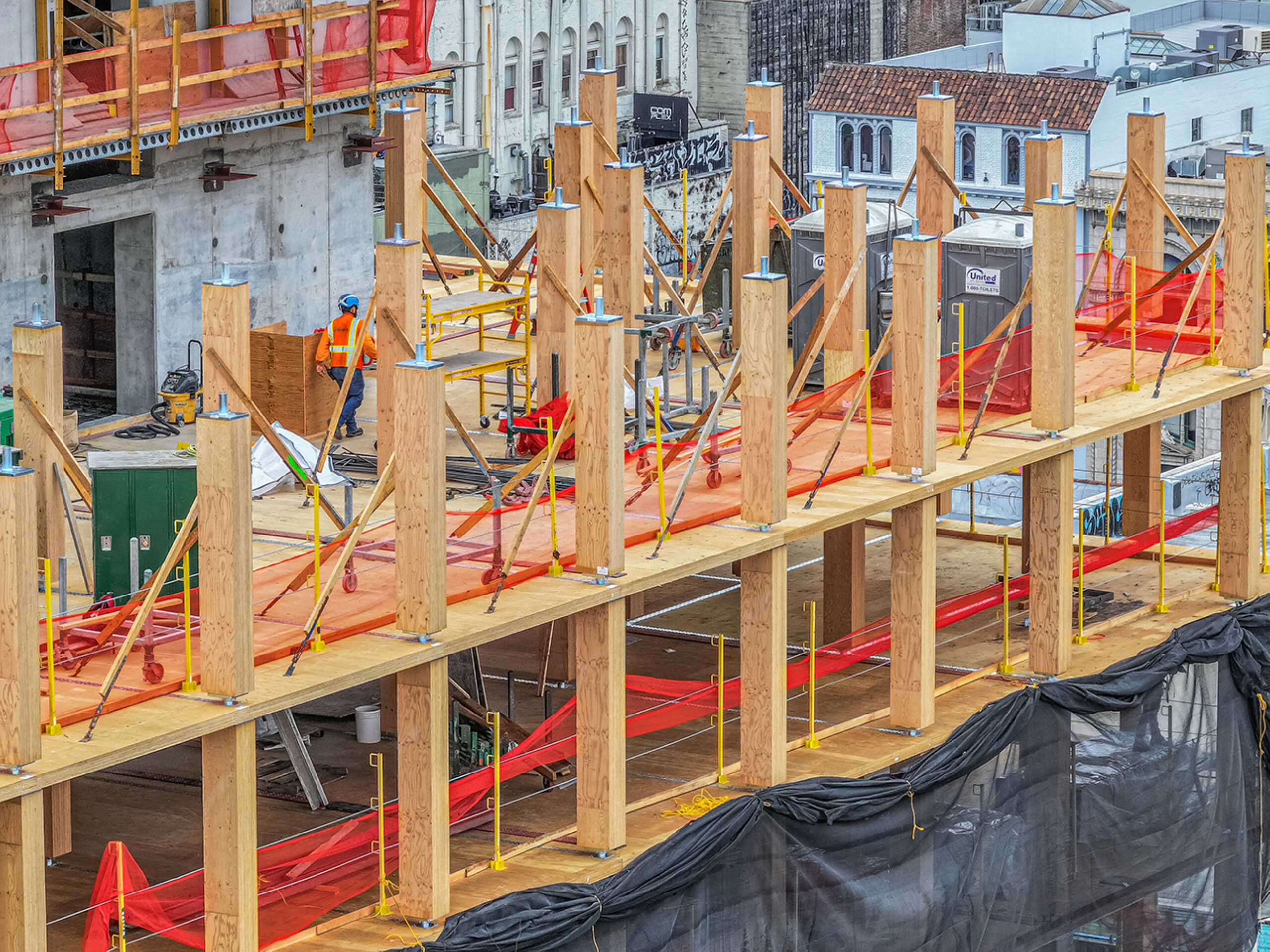As most in the industry may already be aware, the International Code Council (ICC) approved a set of proposals that allows for tall wood buildings as part of the 2021 International Building Code (IBC); but understanding what these changes mean is just as important. Such changes included three new construction types, Type IV-A, IV-B and IV-C, expanding the use of mass timber – most notably, these provisions allow timber structures up to 18 stories and 270 feet.


Deemed a renewable material source, mass timber includes nail laminated timber (NLT), dowel laminated timber (DLT), cross laminated timber (CLT) and mass plywood panel (MPP), which received APA – The Engineered Wood Association certification last summer.
“10 years ago, nobody was really talking mass timber,” notes Michael Dupras, Associate in DCI’s Austin office, “but we’ve been championing its use and benefits for some time.”
He notes several DCI projects, including what will be the first completed commercial structures in Oklahoma and Texas that used 100% engineered mass timber products as the structure framing. The new First United Bank in Fredericksburg, Texas, incorporates southern pine CLT in the diaphragm and roof systems – another first in the country.
NLT was also used throughout the roof and floor systems of The Bullitt Center, the country’s first Living Building Challenge project back in 2013, with all wood having been sourced from sustainable forestry practices.
Currently, steel and concrete structures are the only options for buildings over 85 feet. However, as Dean Lewis, Associate in DCI’s San Francisco office, points out, “these new code provisions will open up the playbook for developers, architects, and engineers to apply wood as a possible solution.”
Requirements of New Construction Types
In contrast to traditional Type IV construction (now referred to as Type IV-HT), mass timber used in new construction Types IV-A requires additional fire protection to achieve fire rating equivalency to Type I-A. New construction Types IV-B and IV-C also require additional fire protection to achieve fire rating equivalency to Type I-B, as illustrated in the summary table below.


A unique requirement of the new Type IV Construction types is the requirement of supplemental non-combustible protection over exposed mass timber elements. The minimum contribution of non-combustible protection is at least 2/3 of the total required protection provided in IBC Table 601 (above). The remaining 1/3 protection may be achieved through charring (oversizing) of the mass timber elements. Some other relevant code provisions include:
Why Code Changes Now?
There has been a growing interest in tall buildings constructed from mass timber materials within the past decade. And while there are mass timber structures all over the world (upwards of 24 stories), in the United States, “such buildings have been constrained by a strong reliance on prescriptive building code limits and less willingness to use performance-based fire protection engineering,” explains a recent WoodWorks technical bulletin authored by Scott Breneman, Matt Timmers and Dennis Richardson.
So, with the growing interest in tall wood buildings, the ICC chartered an ICC Tall Wood Building Ad Hoc Committee which addressed the requirements for new types of construction, allowable building size limits and housekeeping changes, such as fire districts and fire barriers.
The structural- and material-specific changes will be addressed sometime later this year.
What’s Next
While changes weren't implemented until the 2021 IBC, states like Washington and Oregon were already adopting these changes within their respective state building codes. Elsewhere, there are options for pursuing these construction types before the IBC implementation via Alternate Methods and Materials Request (AMMR).
Over the past several years, DCI has been talking with city officials all over the western United States about the allowances for tall wood structures. Our engineers have engaged many cities and state level authorities to help provide information on the coming wave of wood technologies. With the new code proposals, cities now have a game plan for tall timber structures.
With nearly 50 mass timber projects in DCI’s portfolio, ranging from hospitality to residential to commercial and office, DCI’s engineers are ready to assist clients in capitalizing on this industry milestone.
For a complete summary of the Tall Wood Code Changes, see this document from WoodWorks: http://www.woodworks.org/wp-content/uploads/wood_solution_paper-TALL-WOOD.pdf
photo by Ankrom Moisan.


Check out the video on 1510 Webster: North America's first Type IV-A building, the tallest mass timber building on the West Coast, the tallest mass timber building in a high seismic zone in the world, and the world's first mass plywood panel point-supported building.
Erin Spaulding, Associate, Communications Manager | Erin comes from a journalism background with an emphasis in feature writing. She enjoys capturing the unique details of a story and is a firm believer that every person (and every project, for that matter) has a story to tell. Erin loves running, fly fishing and learning about unique spaces. Back in Michigan, she owns a little studio condo that's been readapted from an asylum and turned into a mixed-use residential building.